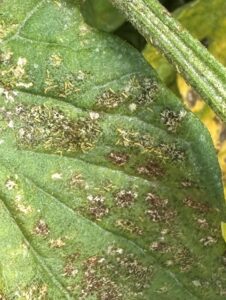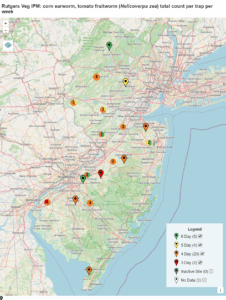Greetings from the Veg IPM team! We hope you all stayed cool during the heat wave this past week!
Sweet Corn
Early plantings of sweet corn are silking throughout New Jersey. Moth captures in much of the state (see map) have generally decreased, but a 4-day spray schedule is still necessary for most growers at this time. When temperatures are high (>85 degrees F), shorten the spray interval by one day. Rotation is important for avoiding resistance, and there are four IRAC groups that are registered in silking sweet corn: 1 (carbamates), 3 (pyrethroids), 5 (spinosyns), and 28 (diamides). Corn earworm is at least partly resistant to several pyrethroids, so a spray program should not rely solely on pyrethroids, although they can be useful in tank-mixes or as pre-mixed products, such as Besiege or Elevest (Group 28 + Group 3). For detailed information about resistance and potential spray programs, the University of Delaware has an excellent resource on corn earworm management. We’ve also seen some instances of European corn borer and corn earworm feeding in tassels of scouted corn, but for the most part, their numbers have not been high enough to warrant control efforts prior to silking.
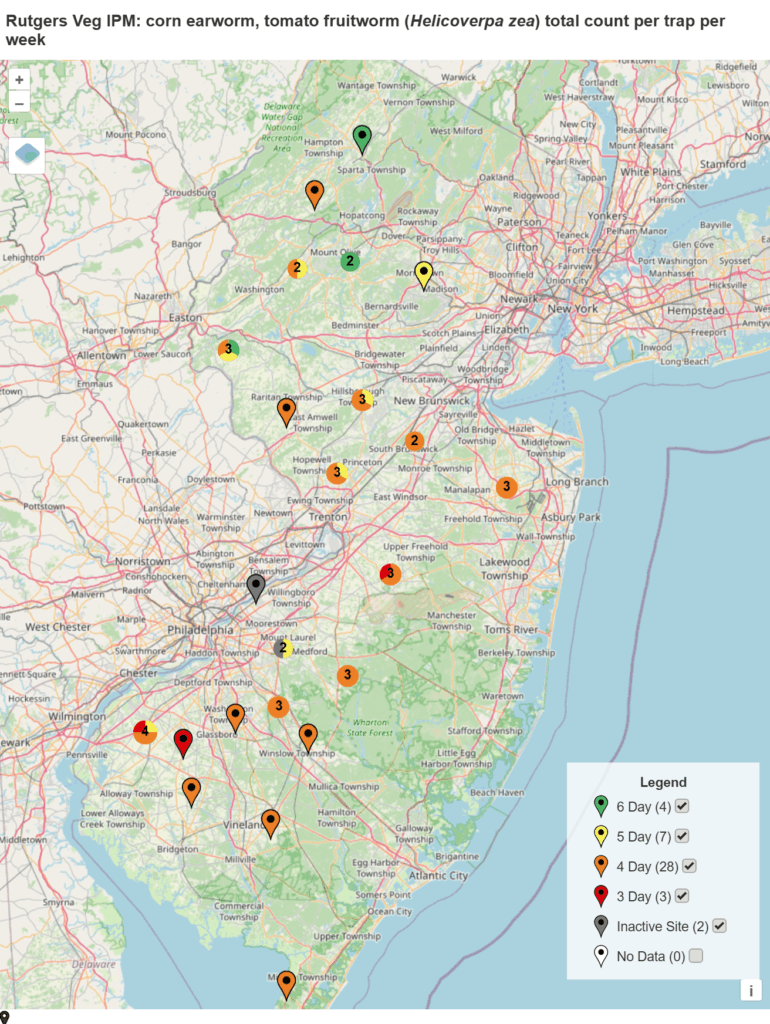
Spray intervals based on nightly pheromone moth captures for the southern part of New Jersey. Note that not all locations in the IPM program are currently trapping. This map is based on the following thresholds: 0 moths = 6-7 day schedule, 1 moth = 5 day spray schedule, 2-20 moths = 4 day spray schedule, 20+ moths = 3 day spray schedule
Tomatoes
Throughout New Jersey we’re continuing to see high thrips counts both in tunnels and in the field, although numbers have been higher in tunnels. We consider more than 5 thrips on 10 leaves a high count. Other guides suggest 3-5 thrips per flower or the presence of stippling damage on fruit to be a treatment threshold. Thrips management is especially important because of their ability to vector tomato spotted wilt virus (TSWV), a growing concern in New Jersey where we have resistance-breaking strains. TSWV has already been seen on farms this season. Thrips management can be especially challenging in high tunnels due to a lack of products. Minecto Pro (IRAC 28 + 6) and Exirel (IRAC 28) can be used in tunnels, but only suppress thrips populations (this means they reduce numbers, but do not eradicate them). In the field, Entrust/Radiant (IRAC 5) can be used as well as Torac (IRAC 21A) and Harvanta (IRAC 28). We do not recommend pyrethroids or neonicotinoids for thrips due to resistance in different thrips species. Refer to the previous link for a complete list of best management practices for thrips and TSWV.
We’re also seeing limited aphid and spider mite activity. If dealing with primarily aphids, products such as Beleaf (IRAC 29) are recommended, especially if plants have reached the flowering stage. However, natural enemies often control aphids, so if counts are low and natural enemies like lacewings, lady beetles, or parasitoid wasps are present, you may avoid sprays. For spider mites, Nealta (IRAC 25) is an effective material that is more friendly to beneficial insects, but Portal (IRAC 21A) and other materials can be used to manage populations. Colorado potato beetles are especially prevalent in eggplants. Please consult the Mid-Atlantic Commercial Vegetable Production guide for appropriate materials for CPB control.
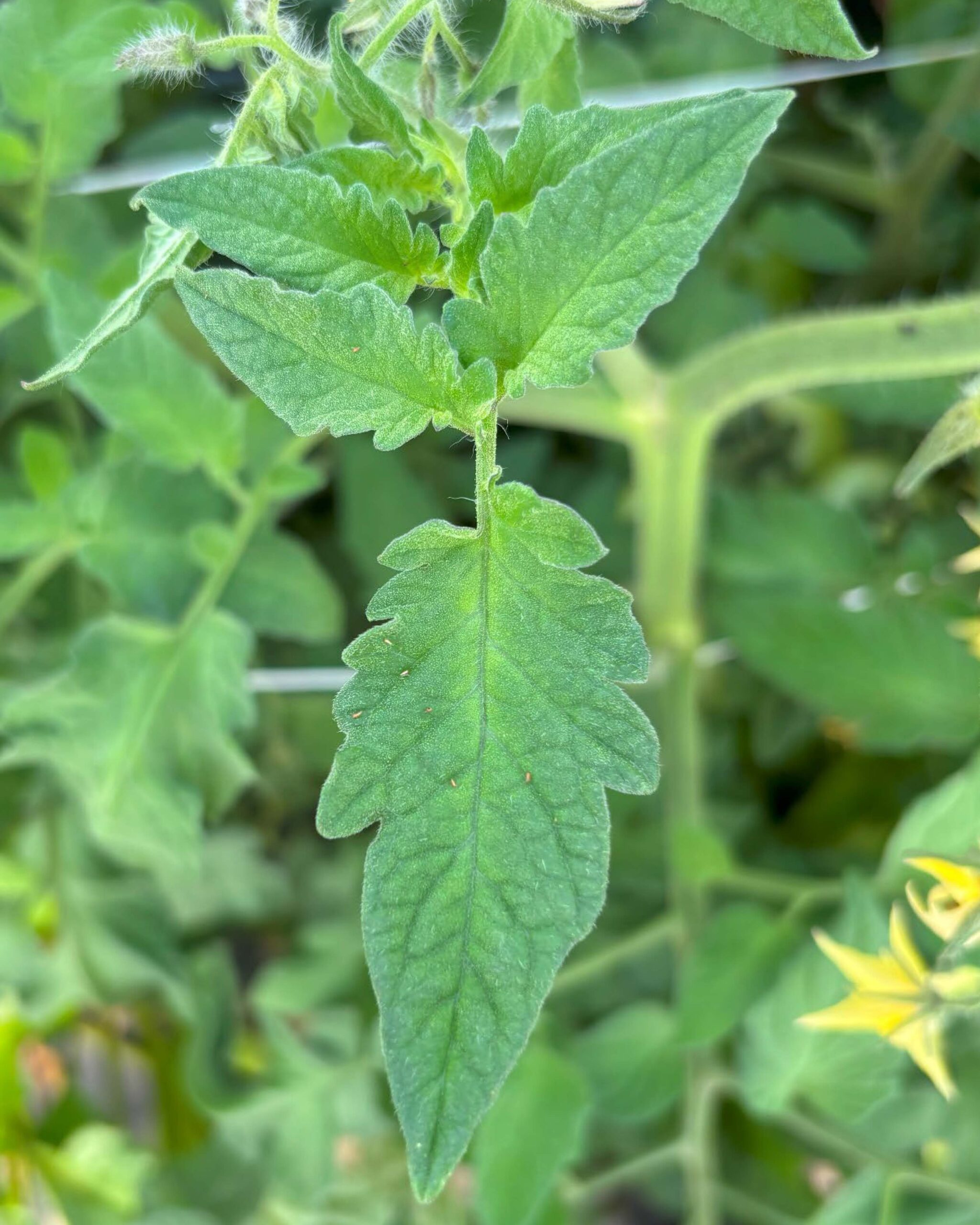
Thrips on a tomato leaf. Photo by Maria Cramer.
Cole Crops
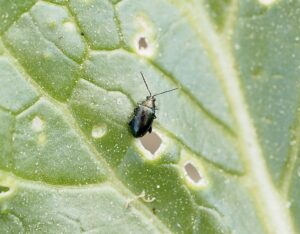
Flea beetle surrounded by feeding damage. Picture by Maria Cramer.
Flea beetle activity seems to be slowing down some, but they are still active in some cole crops. This year, they have been especially prevalent in lacinato kale, Napa cabbage and bok choy. Young plants are especially vulnerable to attack from flea beetles. The treatment threshold for flea beetles in heading cole crops is 50% infestation.
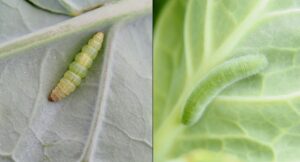
Left: Diamondback moth caterpillar, showing characteristic tapering at each end. Right: Imported cabbageworm caterpillar showing characteristic fuzziness. Pictures by Maria Cramer.
We continue to see caterpillar activity in heading cole crops. Treatment thresholds vary between crops and growth stage, but for heading cole crops between early vegetative and cupping, the treatment threshold is 30%. As heads form, the treatment threshold goes down to just 5% infestation. For very small caterpillars, sprayable Bt products (IRAC 11A) such as Dipel, Xentari, or Javelin can be effective on young imported cabbage worm caterpillars. Other materials approved for caterpillar control include Entrust/Radiant (IRAC 5), Proclaim (IRAC 6), Torac (IRAC 21A), and Exirel (IRAC 28). Diamondback moth (the primary caterpillar found in southern NJ) has resistance to many insecticide groups, and pyrethroids (IRAC 3A) are not effective for their management. For Bt products and contact insecticides, coverage on the undersides the leaves is essential.
Diseases
With the heavy rainfall over the last week, conditions have been favorable for diseases to spread. We’re still seeing bacterial and fungal issues in tomatoes, but we have also started to see issues like Alternaria in cole crops. To prevent the spread of disease, avoid working fields when foliage is wet and continue to use resistant varieties when possible. In tunnels, leaf mold is becoming a prevalent problem as well. Be sure to vent the structure regularly to reduce humidity. Mural (FRAC 7 + 11) is labeled for greenhouse use.
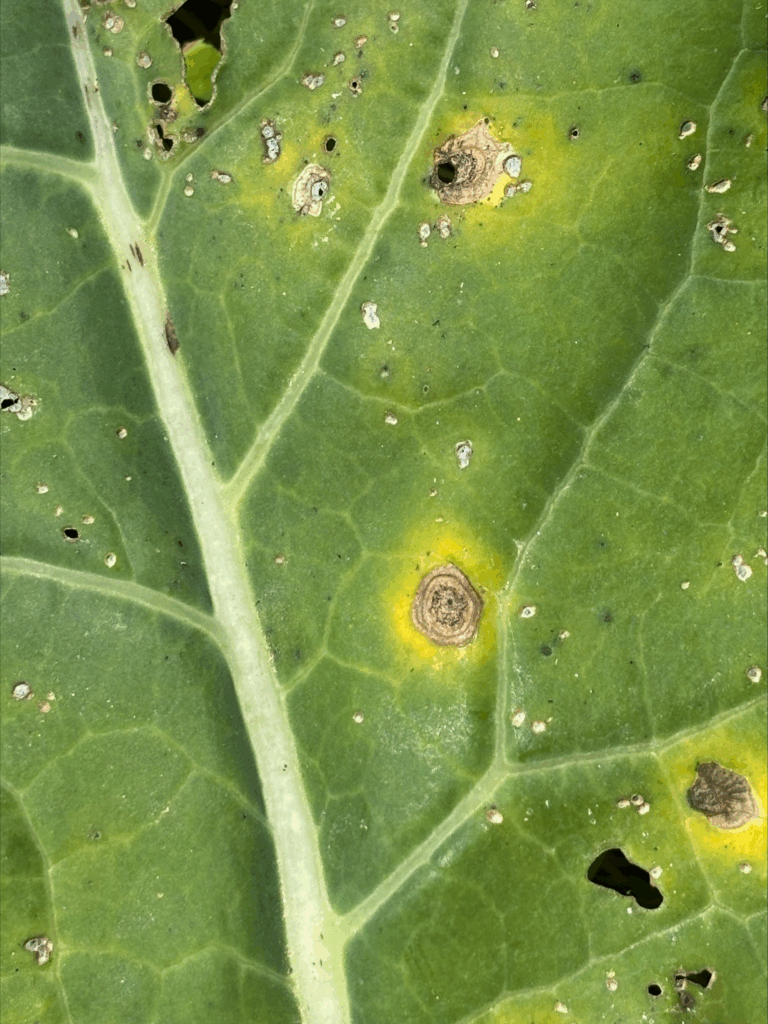
Alternaria on broccoli. Photo by Amanda Quadrel
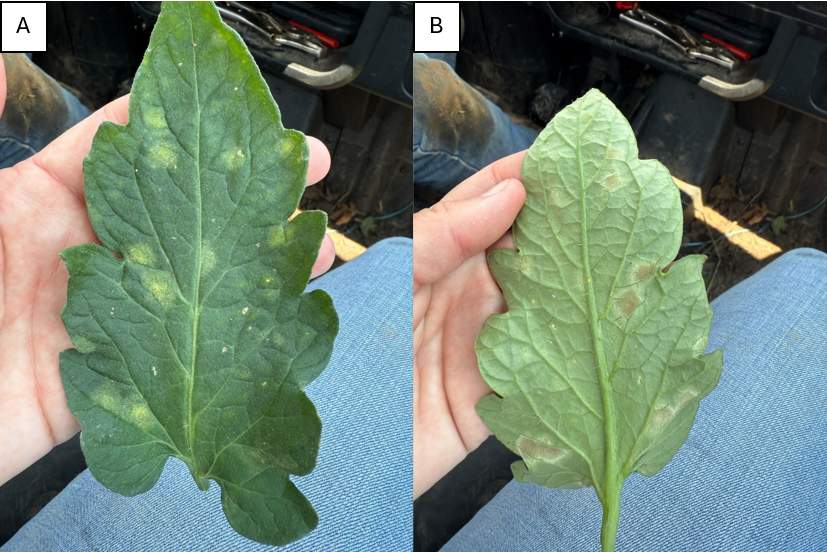
Photo showing leaf mold symptoms on the upper (A) and lower (B) surface of the leaves. Photo by Darcy Perehinys
As always, please consult the Mid-Atlantic Commercial Vegetable Production Guide for a more comprehensive list of materials that are labeled for specific crops and pests. As always, be sure to follow label rates and application instructions.
